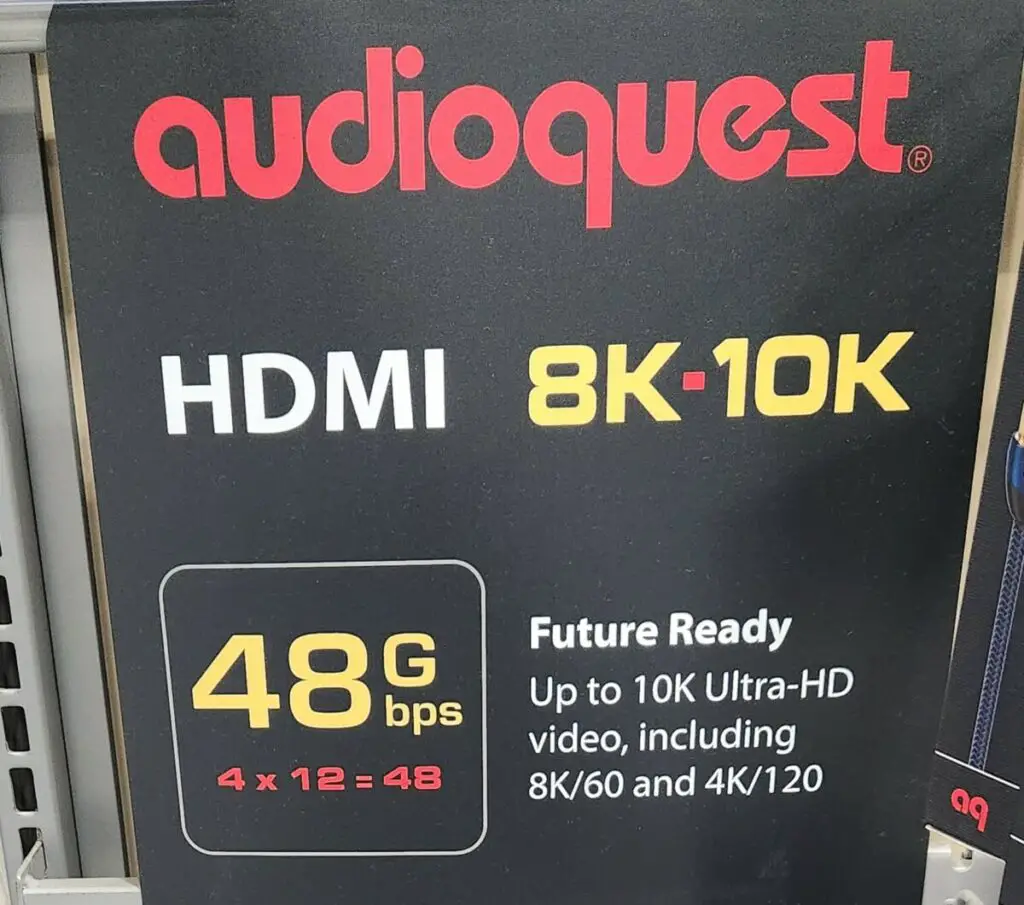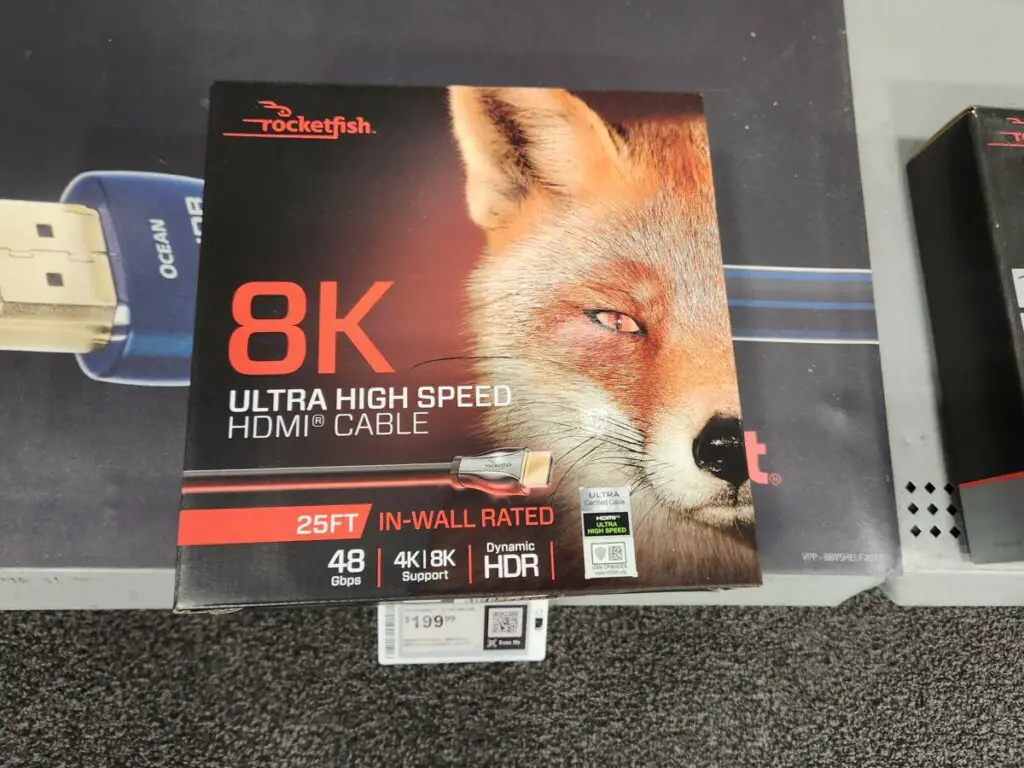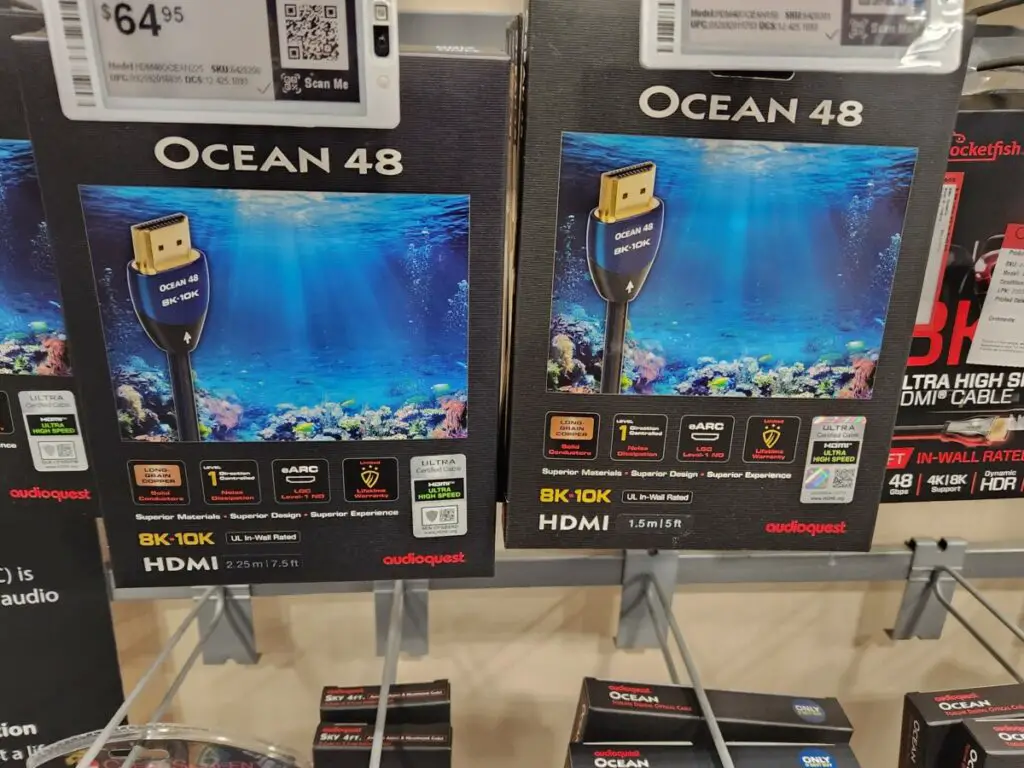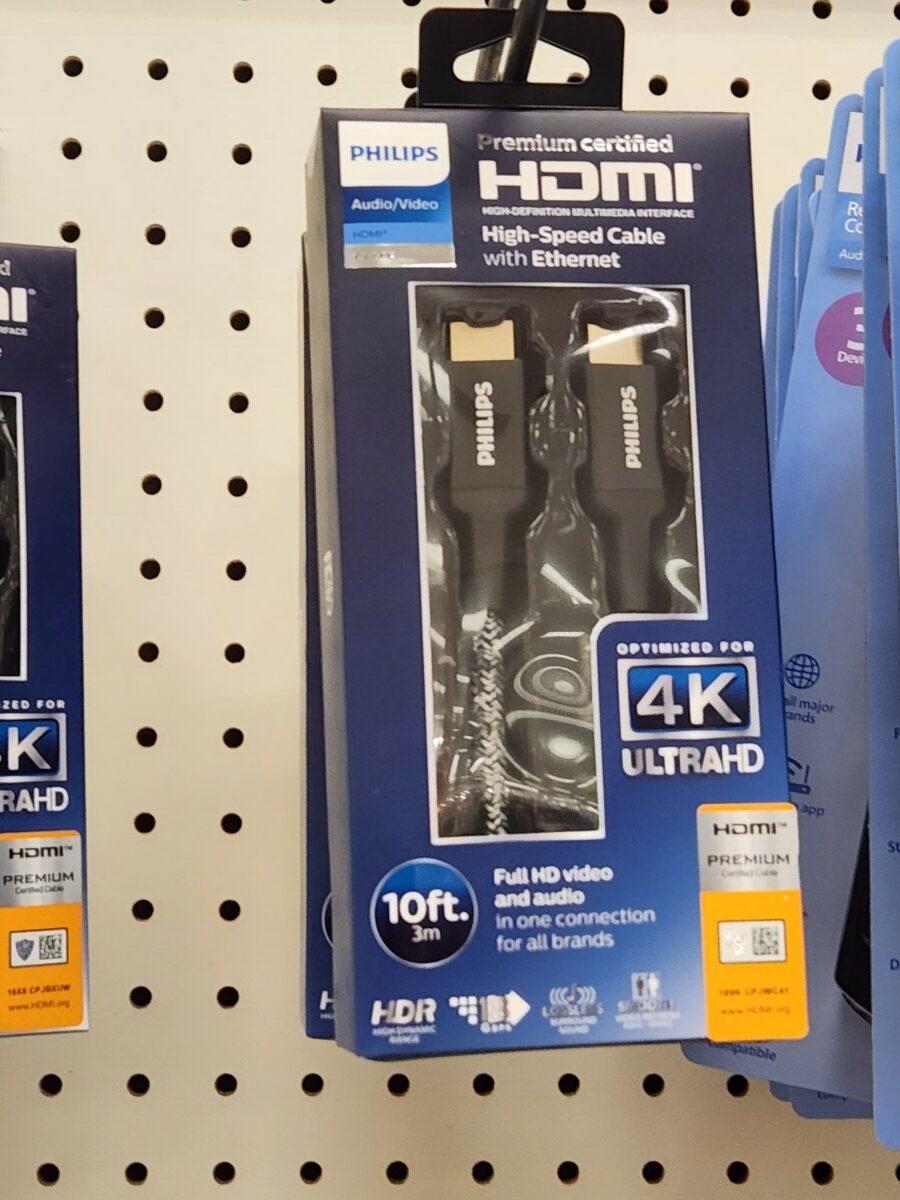As an Amazon Associate I earn from qualifying purchases
When it comes to connecting various devices to your TV, HDMI cables are a common choice for transferring audio and video signals in high definition.
You might be considering a 4K HDMI cable for your setup, even if you don’t have a 4K-capable television.
It’s important to recognize that while a 4K HDMI cable is designed to handle the higher resolution and bandwidth needed for 4K content, using it on a non-4K TV won’t unlock any 4K features.
Your non-4K TV simply isn’t equipped to display the 4K resolution or take advantage of the HDR (high dynamic range) that these cables are capable of delivering.
Given this limitation, you would think there is little practical benefit in opting for a more expensive 4K HDMI cable if you are only intending to use it with a non-4K TV. However, most HDMI cables today are at least 4k compatible and very affordable (affiliate link) so getting one does make sense.
It’s reassuring to know that should you ever upgrade to a 4K television in the future, a 4K HDMI cable will be compatible and ready to deliver the enhanced visuals of high-resolution media.
I highly recommend finally upgrading to a 4k TV as it will significantly enhance your viewing experience. The biggest benefit of 4k technology is OLED, QLED, and HDR:
- With OLED you get insane contrast that makes images look almost better than real life, however, it is very expensive.
- With QLED you get impressive peak brightness and stellar contrast (although not as good as OLED), and they are much more affordable, the TCL Q6 (affiliate link) is what I recommend to pretty much everyone if they want a high-quality 4K TV for cheap.
- HDR means high dynamic range, this comes with pretty much any 4K TV, you get a wider color gamut, and access to billions of more colors, this is what makes 4K a must.
Understanding HDMI and 4K Compatibility

When considering the use of a 4K HDMI cable with a non-4K television, it’s crucial to understand the interplay between HDMI technology, 4K resolution, and the capabilities of non-4K TVs.
This knowledge ensures compatibility and optimal performance.
Basics of HDMI Technology
HDMI (High-Definition Multimedia Interface) cables are the standard for transmitting both audio and video signals between devices.
These cables vary in specifications which correlate with HDMI versions, such as HDMI 1.3, HDMI 1.4, HDMI 2.0, and HDMI 2.1.
Each version offers different bandwidth capabilities, affecting the amount of data transfer and thus the picture and audio quality.
An HDMI 1.4 cable can handle a video resolution up to 4K at 30Hz, while HDMI 2.0 and HDMI 2.1 support higher refresh rates and resolutions, vital for 4K content.
It is fairly easy to determine which type of HDMI cable you have as they are properly labeled and have key indicators
4K Resolution Fundamentals
4K resolution refers to a display with approximately 4,000 pixels of horizontal resolution, equating to 3840 x 2160 pixels – significantly more than 1080p or 720p.
This increased resolution boosts image clarity and detail, necessitating cables that can handle the higher data throughput.
A 4K HDMI cable is designed to meet these needs, offering the bandwidth required to transmit 4K signals without loss or interference.
Non-4K TV Capabilities
Your non-4K TV will support resolutions up to 1080p.
While you can connect a 4K HDMI cable to it, the cable is backward compatible, meaning it can also carry non-4K signals, such as 1080p or 720p.
Using a 4K HDMI cable on your non-4K TV will ensure you’re prepared for future technologies, but it won’t improve your current viewing experience.
HDMI Cable Types and Performance

Selecting the right HDMI cable for your device can impact your viewing experience.
Understanding the varied capabilities of different HDMI cables, especially when considering the use of a 4K HDMI cable with non-4K TVs, is important.
High-Speed HDMI Cables
High-Speed HDMI Cables are designed to handle resolutions up to 1080p and beyond, including advanced display technologies such as 4K, 3D, and Deep Color.
If you own a standard High-Speed HDMI Cable (often referred to as HDMI 1.4), you can expect it to carry a 1080i signal without any trouble.
However, for 4K content, you would ideally need an HDMI cable with more bandwidth, such as an HDMI 2.0 cable, also known as a High-Speed HDMI Cable with Ethernet.
This version supports 4K resolutions at higher refresh rates of 60Hz, along with features like audio return channel and support for HDR content, ensuring a more vibrant and dynamic visual experience with high dynamic range (HDR) and wide color gamut.
Advanced HDMI Features
Advanced HDMI Features are predominantly available with the latest specifications like HDMI 2.0 and above, labeled as Premium High-Speed HDMI Cables.
These cables are specially constructed to handle higher bandwidth requirements, crucial for 4K resolution and higher refresh rates, which provide a smoother and clearer picture.
In addition, if you’re a fan of HDR content, using a cable that supports HDR is mandatory to experience the full range of high dynamic range visuals.
Premium cables ensure that both audio and visual fidelity are maintained, deploying the necessary speed rating to match the performance demands of latest-generation TVs and gaming consoles.
Choosing the Right HDMI Cable for Your TV

When determining which HDMI cable to use for your TV, consider both the resolution your TV supports and the amount of money you’re willing to spend to ensure optimal functionality without unnecessary expense.
Assessing the Need for HDMI Upgrade
If your TV supports 4K resolution, a high-speed HDMI cable is necessary to experience the full quality your TV can render.
Even if yours is a non-4K TV and supports up to 1080p, a 4K HDMI cable, which is backward compatible, could be a future-proof option.
HDMI 1.3 cables and above support up to 1080p, but for 4K (and beyond) content, you’ll want an HDMI 2.0 or HDMI 2.1 cable depending on whether 8K resolution support is important to you.
Budget-Friendly HDMI Solutions
Regarding budget, you don’t need to spend a fortune for quality HDMI cables.
Brands like AmazonBasics and Monoprice (affiliate links) offer budget cables that provide the necessary bandwidth for your viewing needs.
A regular HDMI cable often suffices for current needs, and paying more for additional bandwidth might not yield any improvement on a non-4K TV.
However, investing in a high-speed HDMI cable is a small additional amount that could prepare you for future upgrades.
Remember, cables labeled as “Certified Premium” have been tested to ensure they provide the full 18Gbps bandwidth needed for all HDMI 2.0 features.


